
Making Space at the Table
NAP Contemporary’s group show, The Elephant Table, platforms six artists and voices—creating chaos, connection and conversation.
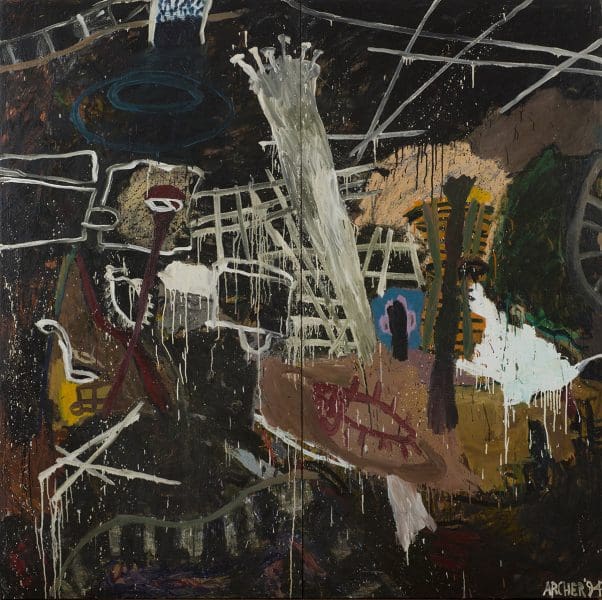
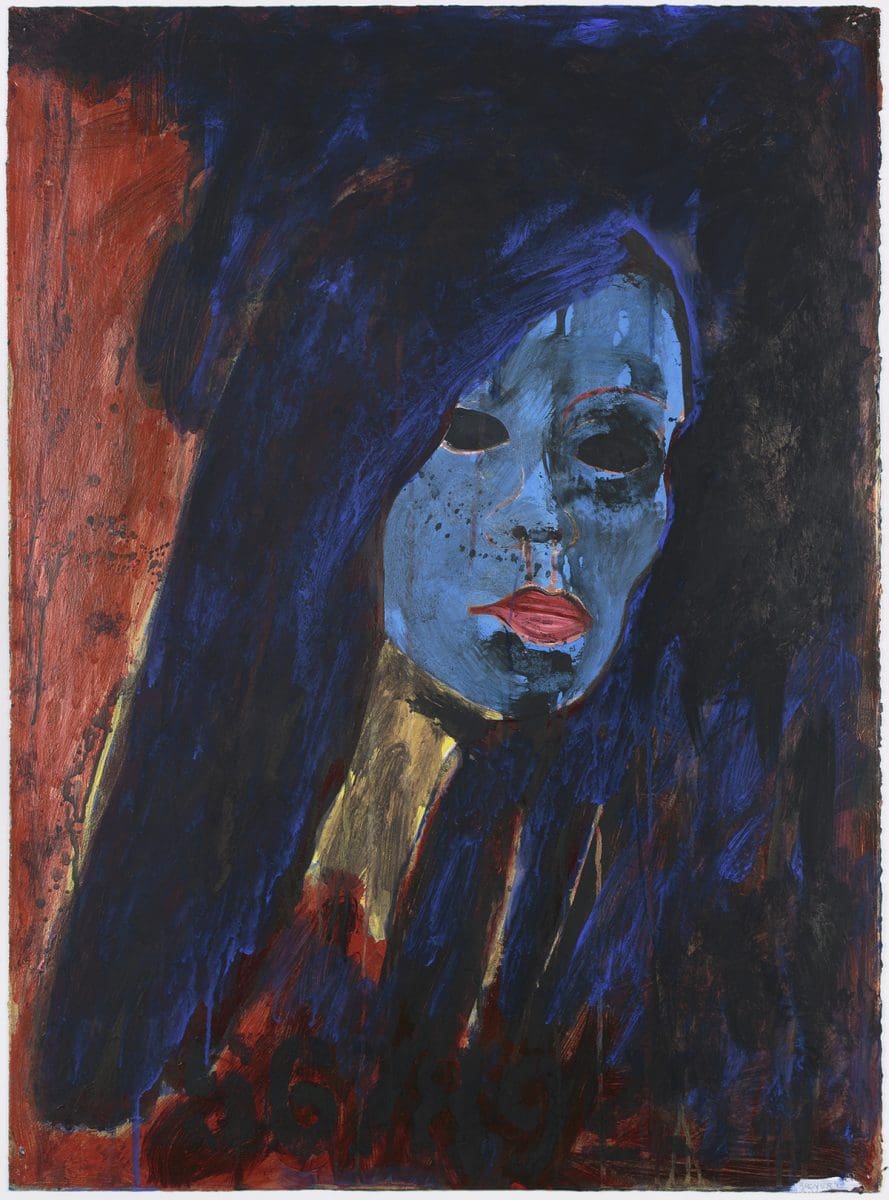

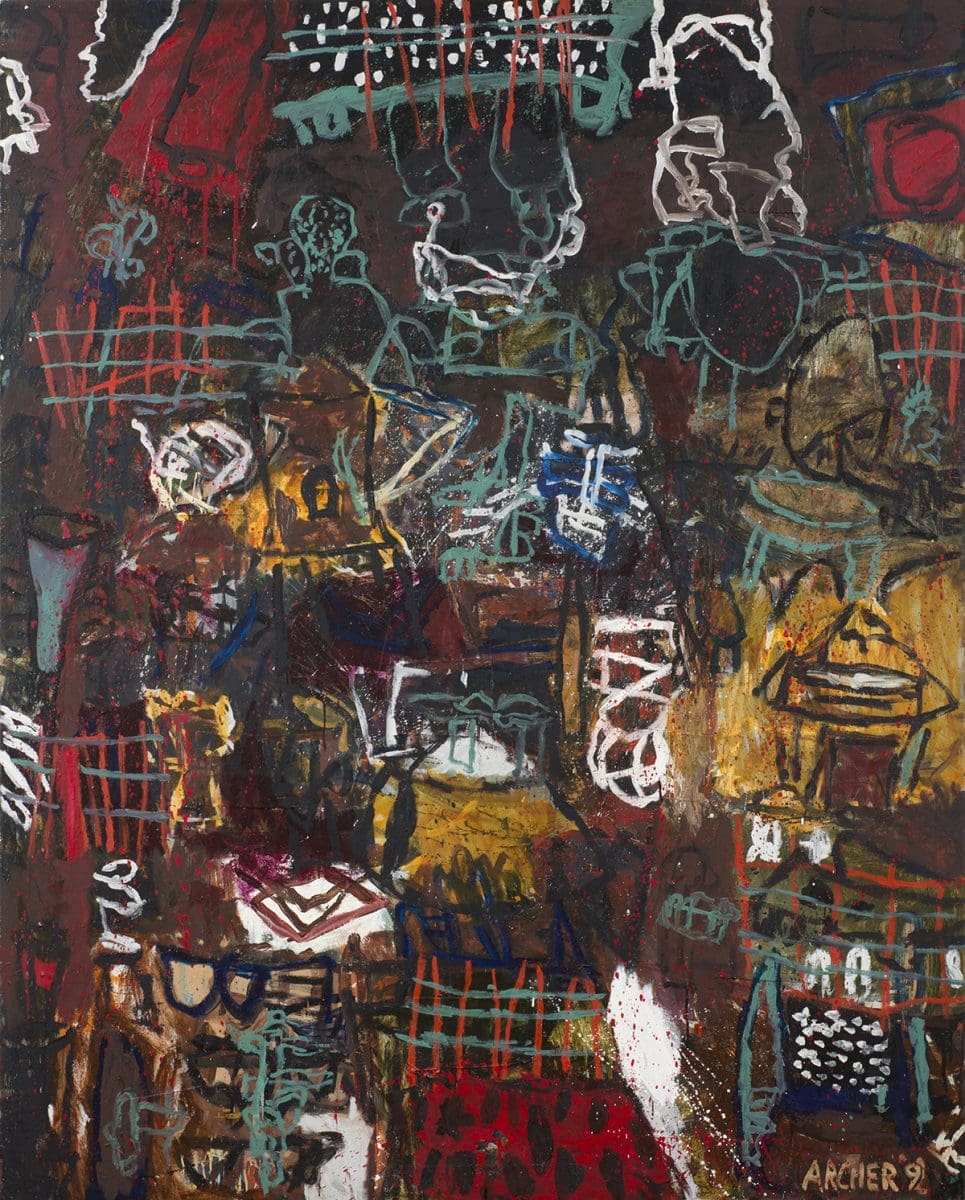
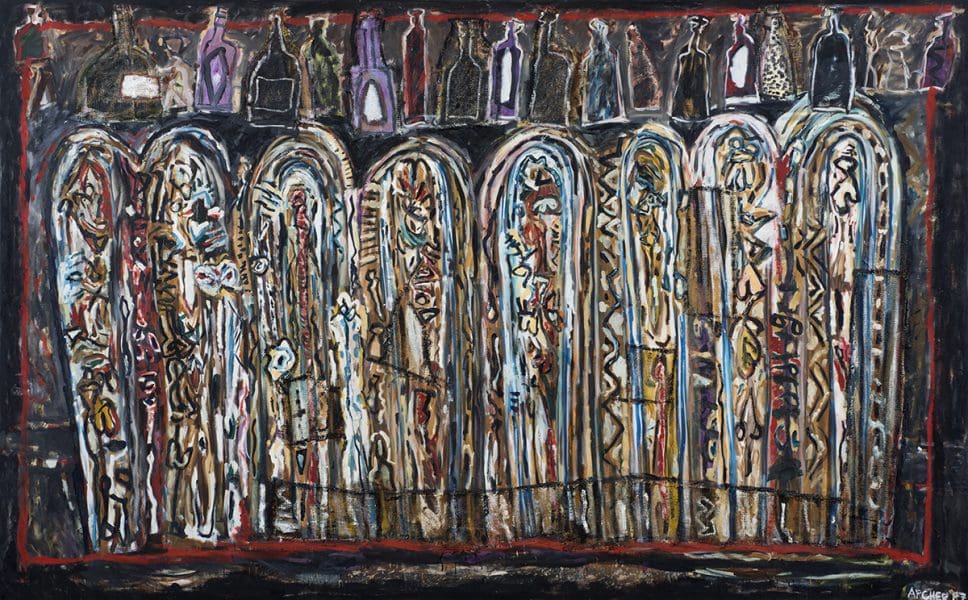
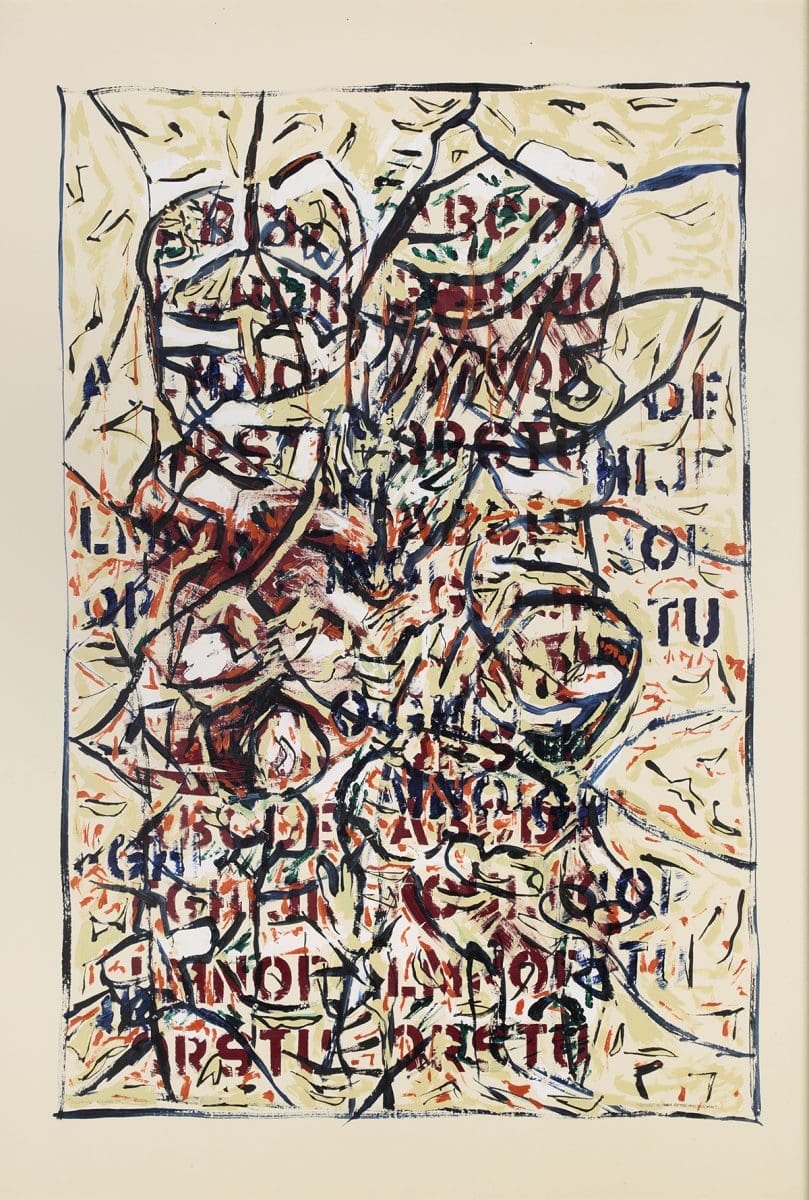
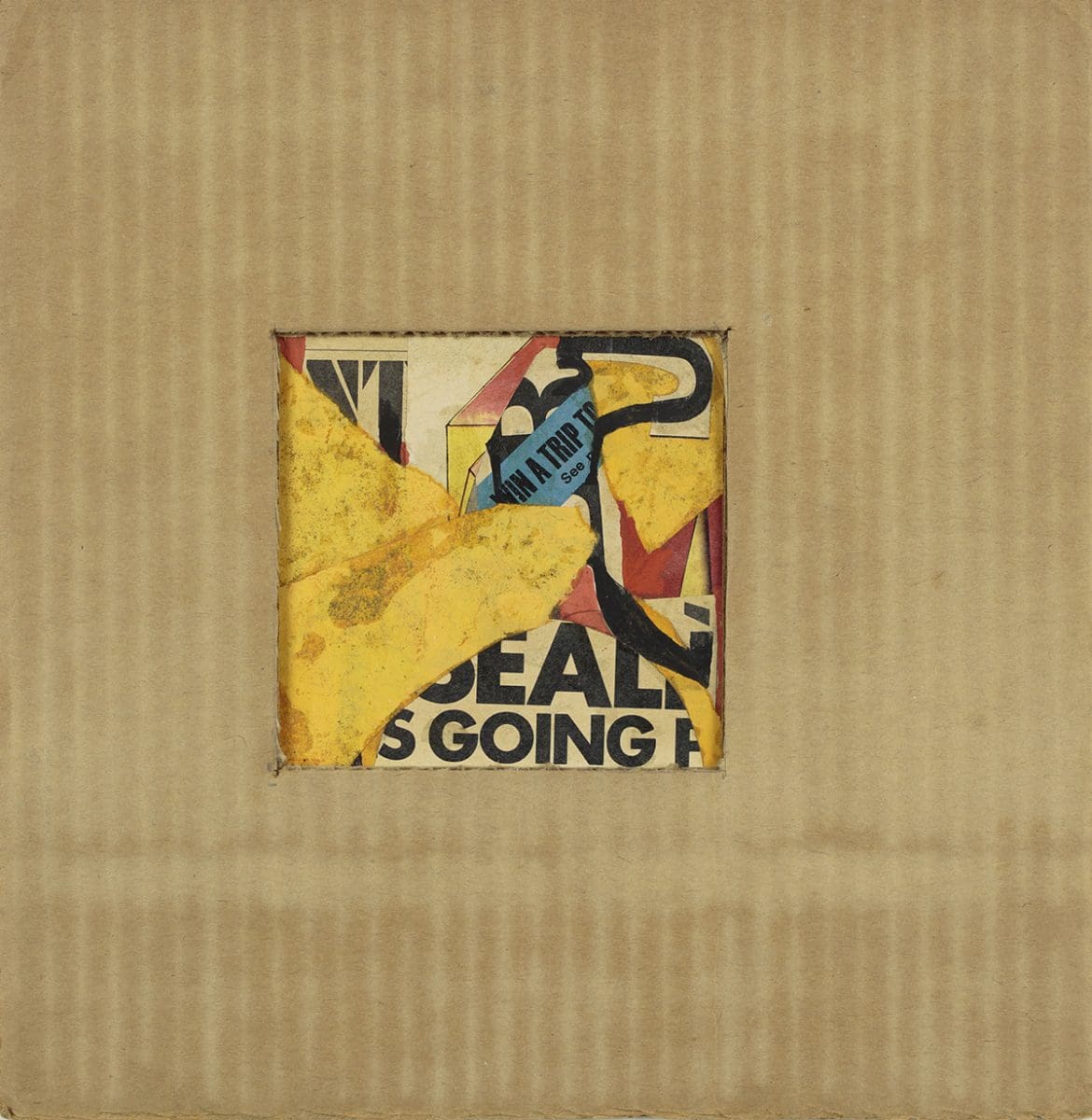

While the thought of our impending demise makes most of us uncomfortable, Suzanne Archer looks at death with curiosity and a dark twist of humour. Archer’s exploration of mortality is the current focus of an art career that spans nearly five decades. With a visceral theatrical style reminiscent of Francis Bacon and a moody palette Francisco Goya would envy, Archer’s work has covered subjects as diverse as landscape, memory and horse anatomy.
“The chosen works exhibit a gestural use of paint, multi-layered and with a defined use of line,” says Archer. “When I was a young art student in the 1960s, I was introduced to the collages of Kurt Schwitters and over the years my use of collage remains quite central to my practice, particularly in my works on paper and in the artist’s books I make.”
Landscape is a repetitive element in the exhibition and Archer’s travels to Paris, Amsterdam and Zimbabwe are reflected in the illustrative depth of abstract works like Mupanda, 1992. Archer’s landscapes are not the soft impressions of Claude Monet. They are more like the layered surfaces of James Esnor in which smears of generous brushwork are clearly visible. Closer to home, Archer has been inspired by the bushland surrounding her property in Wedderburn, where she has lived since 1987. In the imposing three-metre-wide painting, Coalesce, 1993, a prickly array of plant life is depicted in tactile layers of paint, abstract lines and contrasting colour. The result is an image that teeters on the edge of chaos and harmony: elements that encapsulate the organised wildness of native bushland.
Archer’s fascination with motifs of death (decay, mortality, the macabre) began in 2002 when she spent time in the Veterinary Science laboratories at the University of Sydney observing horse dissection classes and creating anatomical sketches of animal remains. Archer visited so often that she was given a horse skull, vertebrae and hoofs to use for reference in her studio. “Following on from this experience, I proceeded to include the skeletal remains of other animals in my oil paintings,” she says. “My studio began to look like a museum as I began to collect various animal skulls, skeletons and bones and place them in cabinets and on the wall.”

A dehydrated kangaroo and the gnarly skull of a bull feature in Guardians, 2007, while the curled horns of a ram spiral through the centre of Trophies, 2007. Decay is central in these paintings, but when Archer’s practice is viewed as a whole it is clear that her work covers the whole gamut of life with a vibrant curiosity that continues to propel her into new creative territory.
“My work over different periods of my life has taken in various subject matter and for a time I have become immersed in that,” she explains. “The subject matter is not intended to confine the interpretation of the work but rather to prompt an extensive experience of that subject to inform me and lead me forwards.” In this survey show Archer is indeed Moving Forwards, Looking Back.
Suzanne Archer: Moving Forwards, Looking Back: A Survey 1969 – 2016
Nicholas Thompson Gallery
17 December – 29 January